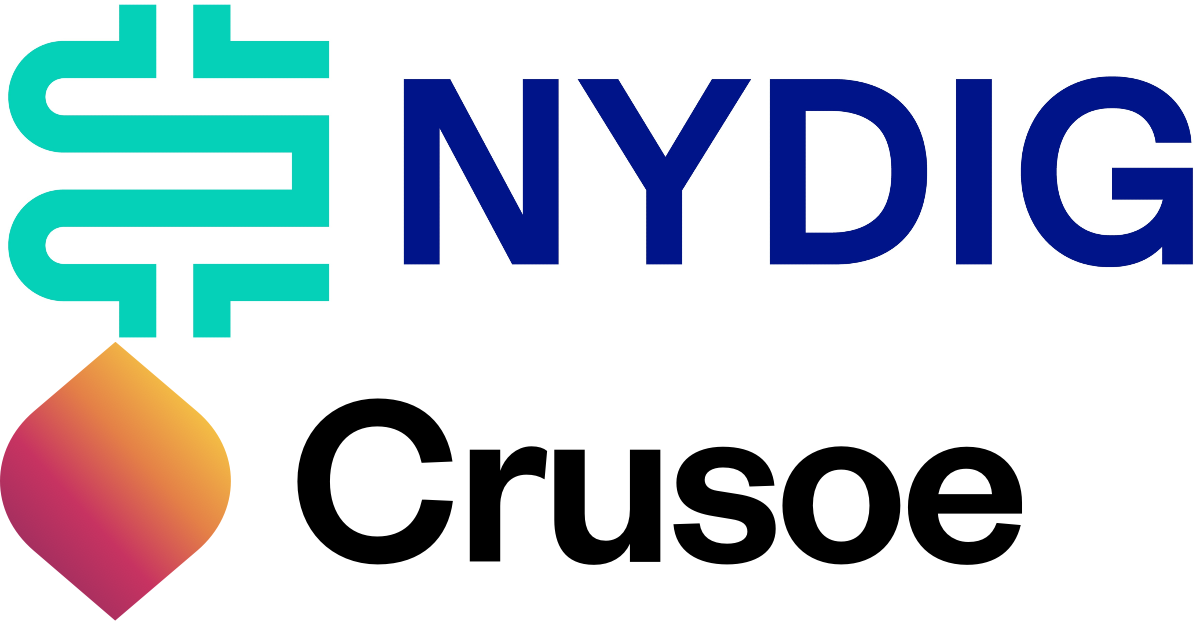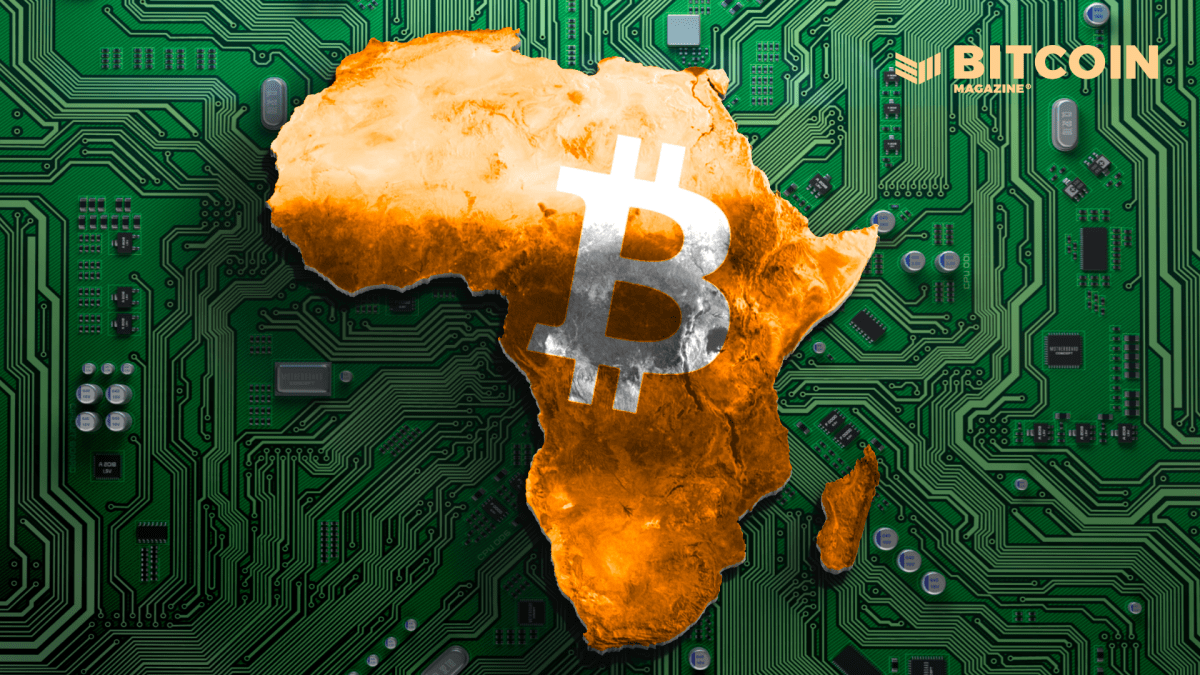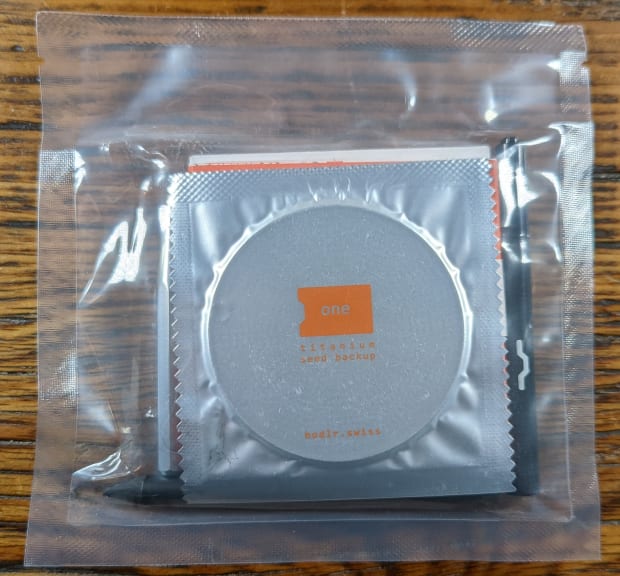Decoding The “Bitcoin Full Node Sculpture,” A Cypherpunk Chronometer
Bidding for the artwork covered in this story will be open during a 24-hour, bitcoin-only auction on February 5, 2021 at 3:33 p.m. EST.

The Bitcoin Full Node Sculpture is a cypherpunk chronometer, designed to work as a fully-functioning bitcoin full node and block explorer. Modeled after the ancient navigation tool, the astrolabe, it acts as a compass for the humble bitcoiner to set to true north.
Visualizing the clock-and-calendar-like nature of Bitcoin stretching over 132 years, the sculpture represents a digital metronome ticking endlessly in the halls of time and space. This cyber-metronome ticks at a steady pace of “every 10 minutes,” as this is in perfect harmony with Bitcoin time. Like the Bitcoin software itself, the sculpture is a tool for personal growth, a tool that connects us to the community, a full circle. Also like the Bitcoin software, the design evolves with each new version.
The sculpture represents a snapshot of a moment in Bitcoin time. In Version 4.0, the node is set to Bitcoin block height 630,000. This is a significant block height in Bitcoin history. Block 630,000 is the first block of the third Halving epoch. It’s the first block with a 6.25 BTC per block “block subsidy” and the first block ever in the history of Bitcoin in the “single digit” reward era.
I’m going to break this article into three sections:
- The Vision
- The Node Architecture
- The Future
There’s a lot here, so if you’re ready to sit back and take a trip down the Bitcoin rabbit hole, let’s get started!
Section 1: The Vision
I wanted to do something to help Bitcoin. I believe that open and decentralized projects can only grow through community input. If I’m in the community, I want to contribute. I’m an artist, so my contribution would be to bring beauty into the world, to try to create something new, something meaningful, that would stand the test of time.
While the idea of “Bitcoin as a cosmic timekeeping device” came to me quickly, bringing it from thought to reality took over seven months of extremely intense work. The redesign for “Number 4” took an additional five months of work. I learned the true meaning of proof of work at a personal level, and I’m so thankful for the opportunity to have gone on this journey and create something meaningful to me. In life, I think that’s the best we can hope for, healthy, wholesome, honest work, a fulfilling journey and rewarding results.
Section 2: The Architecture Of The Bitcoin Full Node Sculpture
First, we’ll take a look at the design schematics, then we’ll break it down into 21 “blocks” (or layers) and dive into the stories contained within each ring.
Each of the layers displays specific information, and we’ll need this key to decode the inner workings of the node. We’ll go through each of the 21 layers together. You’ll see the number 21 encoded within the mandala several times and in different ways, this is all, of course, in reference to the hard limit on the number of bitcoin(s) that can ever exist, 21 million.
Layer 1: Bitcoin Block Stats; Current Network State
You’ll notice that Layer 1 is broken into two distinct sections, a yellow outer ring and an orange inner ring. The outer ring is our constant, this doesn’t change; the inner ring shows the current network state as of the most recent block mined. The “stats” displayed in the inner, orange part of Layer 1 update every 10 minutes as the node validates each new block. (The most recent block is called the “chain tip” and this is the block data displayed in Layer 1.)
Let’s take a look at the block stats for bitcoin block height 630,000:

Each time a new block is found, Layer 1 updates to display the current network info (current block height, block date and timestamp, network difficulty, hash rate, transaction-specific details and the current version of Bitcoin Core that the node is running (0.19.0 was the most current release as of May 11, 2020, when block 630,000 was mined).
Layer 2: The Wheel Of Time
Layer 2 is composed of 132 years, divided into 34 sections of four years each. The four-year cycles within the wheel of time track the Bitcoin Halvings.
“The number of bitcoins generated per block is set to decrease geometrically, with a 50% reduction every 210,000 blocks, or approximately four years”
Bitcoin Wiki
The four-year cycles are shown in a geometrically decreasing pattern: Year one of a Halving cycle is the smallest, and the fourth year is the tallest.
Notice the euler marks below the “Years Containers”? The larger ruler marks measure the four-year Halving cycles, by year (pictured in yellow below), and the smaller ruler marks below those (in pink/purple below) track the difficulty adjustments. Each ruler mark represents 10 difficulty adjustments (there are about 26 per year, so 2.6 ruler marks per year below).
Layer 3: Bitcoin Issuance By Halving
The cut-out sections in the node architecture represent the bitcoin issuance over the 34 Halving cycles. In the first Halving cycle, we see that 10,500,000 BTC (50 percent of all bitcoin that will ever exist), are mined in that first Halving cycle. The largest cut out section represents the period from 2009 to 2012 when the block reward was 50 BTC issued every 10 minutes. You can see, clear as day, the compression of the issuance over time. Time is not a kind mistress here.
Pay close attention to the size of the cut-out sections. These represent the portion of bitcoin’s total issuance per each four-year Halving cycle
At the top of the ring is the “Halving Crest” emblazoned with the mathematical formula that describes the halving function in the bitcoin source code. Interesting to note that the source code references 64 halvings, yet we reach 0 BTC per block after 33.
Layer 4: Binary Encoded Data
Like all good software, there are Easter Eggs to be found and decoded both in this sculpture and Bitcoin as an organism. Ring four is tiny, almost hidden, but for those who look deeper, there’s always more to find. I tried a few fun Bitcoin phrases but in the end, the yellow highlighted strings were used.
I would like to link you to the source for the top reference, where you can learn more about why this was used. “Bitcoin: Everything There Is, Divided By 21 million,” a piece by Knut Svenholm (you’ll also see reference to another work of his, “Sovereignty Through Mathematics,” a wonderful book of which you can read the first chapter for free. You can listen to the full audio here (also free).
If you want to learn more about Faketoshi and his mad-cap antics, this is a must-follow Twitter account.
Layer 5: The Merkle Tree Layer
This is an important ring and it covers a lot of ground. Merkle trees are critically important to the way Bitcoin operates. You’ve heard of “the blockchain,” well, this is how it works.
The layer is composed of 21 Merkle trees divided into three sections of seven each (since 21 is a triangular number). There are 18 “blocks” linking the Merkle trees to each other, all the way back to genesis. Each Bitcoin block is unique, like the faces on quartz crystals, etched into form by time and energy, never to change. To capture this uniqueness, the 18 “blocks” aren’t the standard cube shape you’d expect to represent a block. The 18 blocks are represented by the Platonic and Archimedean solids, the building blocks of all matter in the universe. The 18 solids plus the three “Crests” (or “Pillars” of Bitcoin), 18 plus three equals 21.
The three crests, at the points of the triangle above represent the “Three Pillars of Bitcoin.”
- Social
- Technical
- Financial
As a student of Bitcoin, I try to educate myself in all the different areas of importance, to ensure my education is well rounded. This well-rounded education is a foundation to build upon. I find that to dive deeply into Bitcoin, I must immerse myself into those three aspects. In each of the three pillars, I try to highlight aspects which to me are personally important, but I’m sure I am missing some of your favorites. Let’s go through the sub-subjects included in each section of this ring.
- The Social Pillar: This represents the community aspects of Bitcoin. The peer-to-peer nature of it, the game theory and politics, even environmental impacts and benefits.
- The Legend of Satoshi: Here we have the story of an anonymous cypherpunk hacker who drops a white paper on a cryptography mailing list in 2008, who exhibits perfect OpSec and stays around just long enough to bootstrap the world’s first digital decentralized financial network.
- The Immaculate Conception: Bitcoin’s origin story cannot be replicated. In Gigi’s fifth of his 21 lessons, he states:
“What might look like a weird anonymity stunt is actually crucial for a truly decentralized system. No centralized control. No centralized authority. No inventor. No one to prosecute, torture, blackmail or extort. An immaculate conception of technology.”
- Open Source: Bitcoin is free and open-source software
- Decentralized: This one doesn’t need much explanation, but let’s link here to Stratum V2, the next step in decentralizing mining pools
- Peer-To-Peer: Bitcoin does not need third parties or mediators. It allows us to connect to our neighbors near and far in a direct network, connected to one another. What more could the world want?
- Eco Friendly: This has been one of the more controversial inclusions, due to misinformation about Bitcoin’s energy use, however I’m steadfast in my belief that it should be included. Make sure to read section four on Bitcoin’s energy use in the Stone Ridge 2020 Shareholder Letter;
“As Bitcoin finances the for-profit development of cheap, clean energy infrastructure on a massive scale, it can lead to a future in which more and more of the world’s population lives near abundant energy with an extraordinarily low marginal cost of production. This matters because cheap energy equals human flourishing. That’s an equation. Cheap energy = human flourishing.
“Beyond the revolution in monetary policy that Bitcoin already represents, Bitcoin may also represent the biggest catalyst the world has ever known for developing abundant, clean, cheap energy. And, therefore, one of biggest catalysts in the world for human flourishing.”
- The Technical Pillar: “What’s under the hood?” How does this thing work?
- Proof of Work: Originally conceived by Adam Back as a means to reduce email spam, his “Hashcash Proof of Work System” has become a major linchpin in the machinery underlying Bitcoin
- Linked Timestamping: So critical to Bitcoin that thre of the eight references in the original Bitcoin white paper directly refer to it:
- Merkle Trees: Merkle trees act as a “source of truth” in Bitcoin because blocks can be verified from the chain tip, all the way back to the Genesis Block. “Leaves of the Merkle tree used in bitcoin are typically hashes of single blocks.” Merkle tree hashes can be compared by full nodes to verify the integrity of the chain, and detect any inconsistencies.
- ECDSA: This is how bitcoin addresses, and “public/private key pairs” can be generated, transactions signed, etc. See here: “Elliptic Curve Digital Signature Algorithm”
- SHA-256: According to Bitcoin Wiki, “SHA-256 is a member of the SHA-2 cryptographic hash functions designed by the NSA. SHA stands for Secure Hash Algorithm. Cryptographic hash functions are mathematical operations run on digital data; by comparing the computed ‘hash’ (the output from execution of the algorithm) to a known and expected hash value, a person can determine the data’s integrity. A one-way hash can be generated from any piece of data, but the data cannot be generated from the hash.”
- The Difficulty Adjustment: An astonishing mechanism for computational fairness. Using blocks, not time, the network self-adjusts. Bitcoin, in essence, is winding its own watch! “Every two weeks (or, more precisely, every 2,016 blocks), the bitcoin protocol adjusts the difficulty of finding blocks.” Bitcoin seeks to create a harmonic resonance with blocks mined at a frequency of once every 10 minutes. If blocks are coming too fast, difficulty adjusts up, and blocks become harder to find. If blocks are coming too slow, difficulty adjusts down. A mind-boggling mechanism that works regardless of how much, or how little compute-power is directed at the network.
- The Financial Pillar: Let’s investigate some of the monetary properties of bitcoin that make it the best money the world’s ever seen.
- Digital Scarcity: Completely new, and never before seen in the world, the concept of digital scarcity enables the hard-capping of the bitcoin supply at 21 million, and acts as a cornerstone upon which the foundation of this new cypherpunk financial revolution is built.
“It is worth pointing out that Satoshi didn’t manage to make information non-copyable. Every part of Bitcoin — its source code, the ledger, your private key — can be copied. All of it can be duplicated and tampered with. However, Satoshi managed to build a system that makes rule-breaking copies completely and utterly useless. The Bitcoin network performs an intricate dance to decide which copies are useful and which aren’t, and it is this dance that brings scarcity into the digital realm. And like with every dance, a temporal measuring stick is required to dictate the rhythm.”
Gigi “Bitcoin is Time”
- Durable: Bitcoin cannot rust, it cannot age or degrade over time. It is durable across time and space.
- Fungible: One of the core properties of money, bitcoin is extremely fungible
- Verifiable: Bitcoin excels over gold, your full node instantly verifies if your bitcoin is authentic, no need for chemical assay tests, COAs, etc. You can verify for yourself, with no third party.
- Portable and Divisible: Your money must be able to move, and you must be able to divide it. (You want to be able to get change when you go to the store…)
- Unforgeable Costliness: A concept from Nick Szabo outlined in “Shelling Out, The Origins of Money.” There’s no way to “get free bitcoin” without someone having to work for it. The cost of extracting bitcoin from the network cannot be “faked.”
I’ve spent a lot of time on this layer, and it’s evolved over time. In versions one through three of the “Full Node Sculpture,” the Merkle trees looked like this, and my buddy, Johnny Dollar, gave me smack over the fact that there are no legitimate “Merkle trees” in the layer. I smiled and told him I can take artistic license… but his comments stuck with me.
I felt I could do better here and I spent a long time re-imagining the tree design on this layer. After a lot of hard work, I came up with this. But still, I didn’t have “Merkle trees” really visualized in a way that Johnny would approve…
Unfortunately, this design was too intricate for the laser to cut, so I had to scrap it and go back to scratch. Every time I tried to cut this, it would just burn the wood, and all details were lost. So, back to the drawing board. Literally.
After some more design work, I ended up with a design that both embodied “Merkle trees” but also hinted at the form of a mushroom, with mycelial networked threads connecting to peers, best described by Brandon Quittem in ”Bitcoin Is The Mycelium of Money.”
Not only that, but the laser did a pretty good job with the modified design. Just like Bitcoin, we must work within the constraints of the protocol.
Layer 6: Block Height By Year
This ring has 132 sections that mirror the 132 years from 2009 to 2140, but instead of displaying the year, these containers display the block height at the end of the year.
Layer 7: Block Reward By Halving Era
This ring is divided into 34 “Halving Eras” and tracks the bitcoin block subsidy issued by the network in four-year blocks over 132 years. Every time a new block is mined, new bitcoin are issued, and the amount geometrically decreases over time. We begin at 50 BTC per block in the first Halving Era from 2009 to 2012, and end in 2140 when the last bitcoin is mined, and the block reward drops to zero.
Layer 8: More Encoded Information
- “Bitcoin: Sovereignty Through Mathematics” by Knut Svanholm
- “Bitcoin: A Peaceful Revolution” (quote from Matt Odell on “TFTC,” and there’s a similarly titled article by Nic Carter here)
- “Chancellor on Brink of Second Bailout for Banks,” encoded by Satoshi into the coinbase transaction in the Bitcoin genesis block
After reading the below tweet from Saifedean Ammous, referencing the work by Plan B, I decided to add the stock-to-flow equations from Plan B’s GitHub into the node sculpture.
- ln(market value) = 3.3 * ln(SF) + 14.6 Bitcoin stock-to-flow equation by Plan B.
- Model price (USD) = exp(-1.84) * SF ^ 3.36 from live S2F chart here
Layer 9: Bitcoin Per Day/Bitcoin Per Year
Above we can see that in 2009, the network produces 7,200 BTC per day, and 2,628,000 BTC per year in the first four-year Halving cycle. In our current era (pictured below), 2020 to 2024, the network produces only 900 BTC per day, which comes out to 328,500 per year.
Layer 10: Bitcoin Total Issuance
This ring displays the Bitcoin total issuance at the end of each Halving cycle. Below we can see the first and last totals. At the end of the first Halving cycle, 10,500,000 BTC, or half of the total issuance has been mined. By the 34th era, all 21 million BTC will have been mined (there’s nuance here, as some coins have been destroyed/lost)
Layer 11: The First Bitcoin Transaction
On January 11, 2009, in block 170, Satoshi sent Hal Finney 10 BTC in the first ever bitcoin transaction. That transaction is commemorated here in Layer 11. The ring details the nature of bitcoin spends to create “change addresses” in addition to “receive addresses.” To send Hal 10 BTC, Satoshi had to break up a $50 bill (of sorts, it’s a 50 BTC UTXO). To send Finney 10 BTC, Satoshi also had to send himself back 40 BTC. Which you can see here:
Finney eventually spent the 10 BTC in this transaction in November 2011. Satoshi appears to have sent someone else (or maybe Finney again) another 10 BTC in this transaction the next day in block 181, but those 10 BTC are still unspent to this day.
Layer 12: The Halving Ruler
This ruler tracks every 2,016 blocks between each difficulty adjustment, and every 210,000 blocks between Halvings.
- Calendar Years: 132 (green arrow)
- Difficulty Adjustments: 3,437 (blue arrow)
- Reward Eras: 34 (purple arrow)
- Block Height: 7,000,000 (red arrow)
Layer 13: Satoshi’s Equations
This ring contains all of the mathematical equations found in the Bitcoin white paper.
Layer 14: Calendar
This ring is very simple, it tracks regular calendar time, over 365.4 days/year. It tracks month and day for use in linked timestamping through Merkle trees.
Layer 15: Block Confirmation Time
In this layer we look at the Poisson distribution of block confirmation times. Some blocks take more time and some take less, but the network strives for an equilibrium at 10 minutes per block. This wavy distribution of time is captured in the 10 ARCs within the upper semicircle.
Inside the main circle with the Bitcoin logo, we have “hard coded” the genesis block into the full node, just like in every bitcoin full node:
- scriptPubKey=0x5F1DF16B2B704C8A578D0B)
- Merkle Root = 3BA3EDFD7A7B12B27AC72C3E67768F617FC81BC3888A51323A9FB8AA4B1E5E4A
- Block 0 Transaction Hash = 000000000019d6689c085ae165831e934ff763ae46a2a6c172b3f1b60a8ce26f
- Satoshi’s First Address — 1A1zP1eP5QGefi2DMPTfTL5SLmv7DivfNa — a true Bitcoin mystery. For some reason, even though I believe no one can ever spend bitcoin from this address, people have been sending BTC to this address almost daily for 12-plus years. Why?
Layers 16 to 19: Block Reward Eras
Here we can clearly see the bitcoin block reward eras divided into;
- Three Double-Digit Reward Eras (50, 25 and 12.5 BTC per Block)
- Three Single-Digit Reward Eras (6.25, 3.125, 1.56)
- 28 Sub-Full Bitcoin Reward Eras (less than 1 BTC per block)
Layer 20: Bitcoin Issuance Ruler
Tracks bitcoin issuance (from zero at the center) up to 21 million over time.
Layer 21: Bitcoin Halving Era Ruler
Tracks the Halving reward eras in which bitcoin is issued (from zero to 34, even though 64 Halvings are programmed into the source code). Halvings 35 to 64 are set to zero bitcoin per block, so are not tracked in this ruler.
The Back: Bitcoin Signed COA (Certificate of Authenticity)
Most art comes with a certificate of authenticity, but these fragile paper certificates are simple to counterfeit, and only give the buyer a minimal assurance of the provenance of the artwork.
I was able to sign a message on-chain, and hide it inside a CoinJoin transaction.
This message, the COA itself, is stored immutably on the Bitcoin blockchain forever, and is a unique re-imagining of a concept from the traditional art world. We enter a meta-realm where the sculpture exists only because of Bitcoin, and now the sculpture is connecting back to the source in a never-ending circle, as the transaction is reconfirmed every 10 minutes.
Here’s the transaction hash: 32dab765d6b5ffbc2bcd4e14adfb261e040b40be5f084415ce06a3ba9605a8f6
You can see my “creator address” — 1KZ8q6HKdTc1DsENqu722sDkrALGpdFXLi — below in the signed message, you can also see it as an input in the above transaction. You’ll notice I had to use a “legacy address” beginning with a 1. This is because Bitcoin Core can only sign messages from legacy and not native SegWit addresses. I thought I had created a cool address with “NGU” in it, but it was late, I was tricked, it’s a “q” not a “g.”
And this is all engraved on the backside of the sculpture:
A Few More Pictures For The Road…
Functionality?
So, okay, right now, the sculpture doesn’t really “do” anything other than look pretty hanging on the wall. However there’s a lot planned and some of those plans are described below.
Section 3: The Future
We have a long way to go, in some ways, we’re just beginning. I have visions of fully-mechanized moving parts, interlocking rings and embedded small board computers running Bitcoin Core within the sculpture. Now that we have the map, we have to embark on the journey. All it takes is moving the clock forward.
I’m currently working on a project that will allow live Bitcoin network data to be light mapped onto the full node sculpture (using projection mapping techniques). A friend and I did a proof of concept project at last year’s Bitcoin Hackathon and you can see some photos from my presentation below:
The video below is what is to be projected onto the full node and was an example of “finding a new block.” Keep in mind that the below was done over a 24-hour period, with almost no sleep, but I feel it’s still a good representation of the idea here. With more time and focus, I’m excited to see where we can go with this!
I believe bitcoin has a lot to teach us about being human, interacting with others and our environment, and growing as a species.
I leave you with these thoughts…
Bitcoin is crystallized time and energy. In this form, they can be stored indefinitely and transported instantly across the planet. Bitcoin can exist in the physical world, the digital world and it can even be stored in your mind, as nothing more than a memory. We are living in amazing times.
“Timekeeping devices have transformed civilizations more than once. As Lewis Mumford pointed out in 1934: ‘The clock, not the steam-engine, is the key-machine of the modern industrial age.’ Today, it is again a timekeeping device that is transforming our civilization: a clock, not computers, is the true key-machine of the modern informational age. And this clock is Bitcoin.”
–Gigi, “Bitcoin Is Time”
This is a guest post by FractalEncrypt. Opinions expressed are entirely their own and do not necessarily reflect those of BTC Inc or Bitcoin Magazine.
The post Decoding The “Bitcoin Full Node Sculpture,” A Cypherpunk Chronometer appeared first on Bitcoin Magazine.









